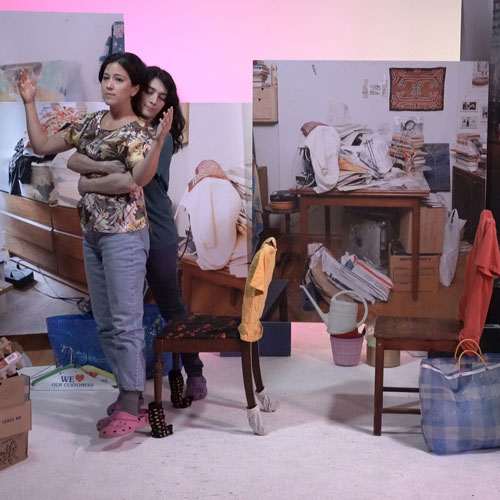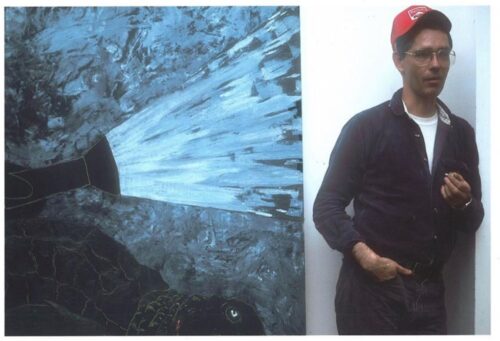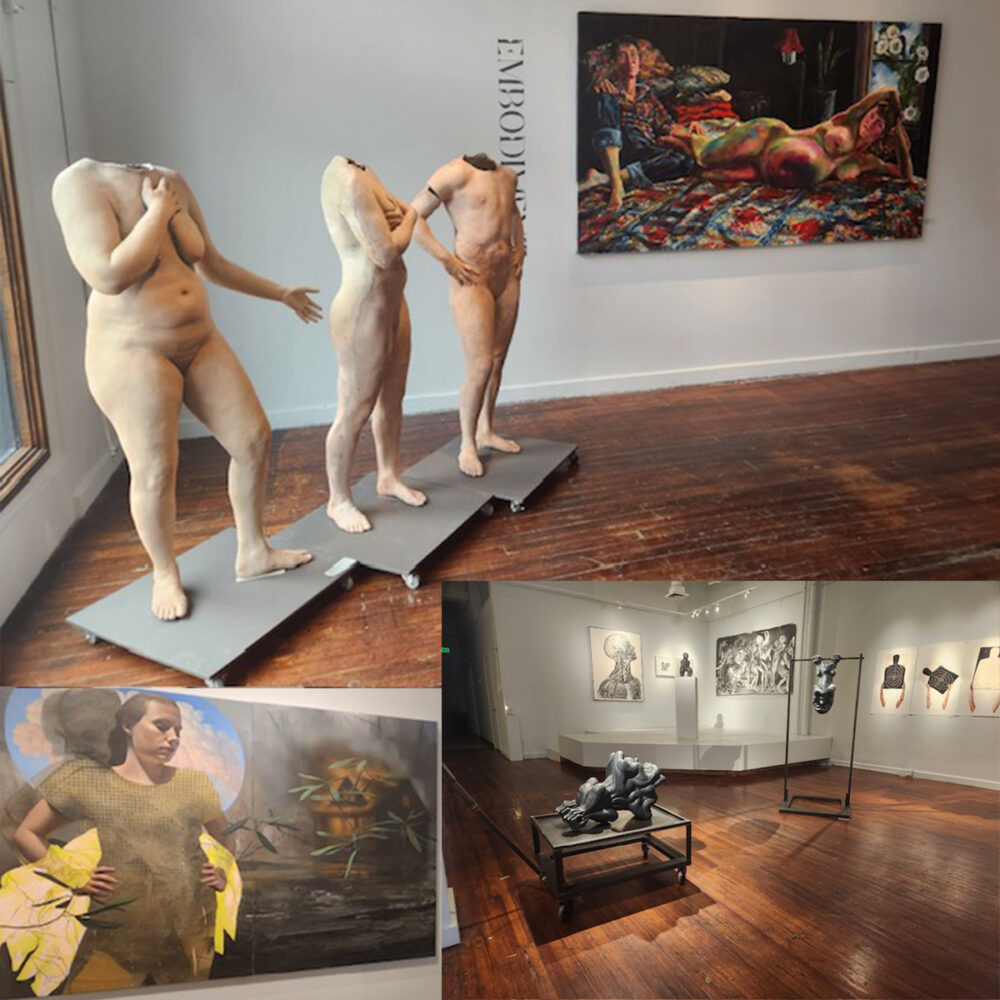RLo Hernandez’ two large scale drawings are rendered in charcoal with a blended middle ground, creating a sort of ether for various elements of the compositions to float in and out of. In RLo’s larger untitled drawing on the east side of the gallery, this monochromatic middle space creates a fog of war, with overlapping human figures seemingly fleeing something unseen, one carrying an infant. Hernandez’s other untitled work is inside the small cubicle on the west side of the gallery, and replicates the “ether” effect on a more individual level, utilizing the middle ground to show many figural and corporal elements seemingly flashing in and out of existence in a blur, much like trying to read text in a dream.
Herandez’s work evokes Picasso’s “Guernica,” Fritz Lang’s Metropolis, and Stephen Gammell’s illustrations for Scary Stories To Tell In The Dark. These two works are simmering with horror, disillusionment, and a structural ambiguity that feels eerily prescient of our current moment, politically and globally. Without much effort, the inescapable casual viewing of the bombardment of Gaza has given even the most politically disconnected person a first hand account of the kind of horror of the atrocity that inspired Picasso’s famous work. To have this horror reflected back intentionally or unintentionally by Hernandez, one can feel the emotional evisceration of the deconstruction of corporal thought, whether it is loss of one’s body, culture, or state.
The way we all inhabit our bodies surely must feel different. That’s part of some of the universal subjectivity of existence, and a baseline intro to the Richard-Linklater-level existentialism present in our TikTok reductionist age of being “the main character,” to borrow an internet idiom.
Art as an extension of the body—and, by proxy, the humanities in general—does a lot of heavy lifting in the effort to build empathy in our common populace. Thich Nahn Tahn talks about the limerance of passing someone on the street and realizing there are buddhas in all of us, everyone living their own lives with their own struggles, each with their own suffering. This is refreshingly evident in the breadth of work on display in Embodiment, and through the collective efforts of these artists, it’s hard to forget how important it is to walk in someone else’s shoes.
‘Embodiment’ is on view through March 23rd, and features of the work of Marie Amegah, Evan Boggess, Hoesy Corona, Joan Cox, Lania D’Agostino, Michelle Dickson, Christin Fanelli, Richard Lopez-Hernandez, Trisha Kyner, Allen Linder, Kate Norris, and Scott Ponemone.
The show is curated by Caitlin Gill.
















